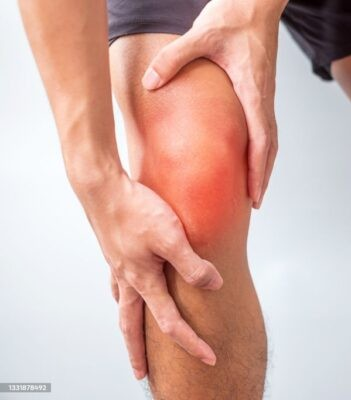
Tendonitis: Physical Therapy Improves Pain and leads to Early Return to Function
![]() By Dr. John R. Mishock, PT, DPT, DC
By Dr. John R. Mishock, PT, DPT, DC
In the US, there are over 33 million musculoskeletal injuries, with more than 50% involving tendon injuries. (James et al. J Hand Surg AM, 2008) More than 1,000 tendons in our body can present with chronic tendon pain. Chronic tendon pain is a common disabling condition that affects the quality of life for millions of people, leading mainly to impaired function, reduced physical activity, and poor quality of life. The most common tendon injuries are seen in the shoulder (rotator cuff or biceps tendonitis), elbow (golfers or Little League elbow), hip (hamstring strains), knee (jumpers knee), and ankle (Achilles tendonitis, shin splints).
Is it tendonitis or tendinopathy?
Tendons connect muscles to bone, allowing joint movement. They can become acutely injured with excessive contraction or stretch or repetitive overuse. Chronic pain of the tendon is known as tendinopathy.
What are the symptoms of tendon injury?
Micro or macro tearing occurs when the tendon is placed under excessive or uneven mechanical stress or load. The stress disrupts the nerve endings and blood vessels and causes symptoms, including swelling, pain, limited strength, altered range of motion, and impaired function and performance.
What factors lead to tendon injuries?
One of the most common causes of tendon pain is overuse, which can occur in the workplace or in an individual’s sport. Other factors include poor nutrition, excessive body weight, diabetes, smoking, genetics, and age. As we age, the blood supply to the tendon becomes limited, leading to degeneration and an increased risk of tendon injury. For example, approximately 80% of Achilles tendon injuries are due to restricted blood supply. (Hess et al. Foot Ankle Spec, 2010)
How is tendon injury diagnosed?
The diagnosis of tendon injury is based on a careful medical history and detailed clinical examination. In some cases, diagnostic imaging (MRI, ultrasound, X-ray) is used for differential diagnosis, but it does not tell which tendon is causing pain.
Do drugs increase my risk of tendinopathy?
Certain drugs, such as corticosteroids, aromatase inhibitors, quinolone antibiotics, and statins, increase the risk of developing tendinopathy.
How do tendons heal with physical therapy treatment?
Tendons heal through three overlapping stages: tissue inflammation, cell growth and proliferation, and cellular remodeling. During the inflammation phase, it is essential to protect the area with short periods of immobilization or modification of muscle contraction using PRICE. Protect, Rest, Ice, Compression, and Elevation. This should be done for the 1st 24-48 hours following injury. At this point, the inflammatory and proliferation phases continue to heal the damaged tissue. A new tendon is created via fibroblasts, which generate collagen during the proliferation phase. The proliferation phase of healing is a great time to begin physical therapy or chiropractic.
How does manual therapy help in the healing of tendons?
Manual therapy techniques (skilled application of hand movements to the dysfunctional soft tissue of joints) to help relieve pain, enhance soft tissue healing, and improve patient function. Manual therapy creates several therapeutic benefits that enhance recovery. Manual therapy has a neurophysiological effect on the superficial nerve endings, causing a reflexive inhibition of pain. (Eur Appl Physiol 2017) It also increases circulation to the injured muscle or tendon, which brings in new oxygenated blood with tissue-healing elements (fibroblasts) that help speed up the recovery of damaged tissue. (Journal of Strength and Conditioning, 2014) It also can improve the flexibility of tight or spastic muscles, increasing the range of motion of affected joints. (Journal of Jah Univ of Med Sci., 2012) This helps improve pain and enhance recovery faster than time alone.
Does therapeutic exercise help with tendinopathy?
Physical therapists use a variety of movement and exercise types to improve pain and optimize healing, from stretching to eccentric muscle contraction. Eccentric exercise modulates nerve ingrowth, releases the body’s natural pain relieves (nociceptive mediators), increases collagen release, and enhances capillary growth. All this helps increase tendon healing time, decrease pain, and improve function.
How long does it take for my tendon injury to heal?
There is a wide variety of healing times with tendon injury; however, with physical therapy, the expectation is that recovery would be up to 50-70% faster with scientifically based physical therapy.
We can help!
Visit our website to read more physical therapy related articles, learn more about our treatment philosophy, our physical therapy staff, and our 5 convenient locations in Gilbertsville*, Skippack, Boyertown, Phoenixville*, Limerick* at http://www.mishockpt.com.
Dr. Mishock is one of only a few clinicians with doctorate-level degrees in both physical therapy and chiropractic in the state of Pennsylvania. He has also authored two books; “Fundamental Training Principles: Essential Knowledge for Building the Elite Athlete”, “The Rubber Arm; Using Science to Increase Pitch Control, Improve Velocity, and Prevent Elbow and Shoulder Injury” both can be bought on http://www.amazon.com or train2playsports.com.
